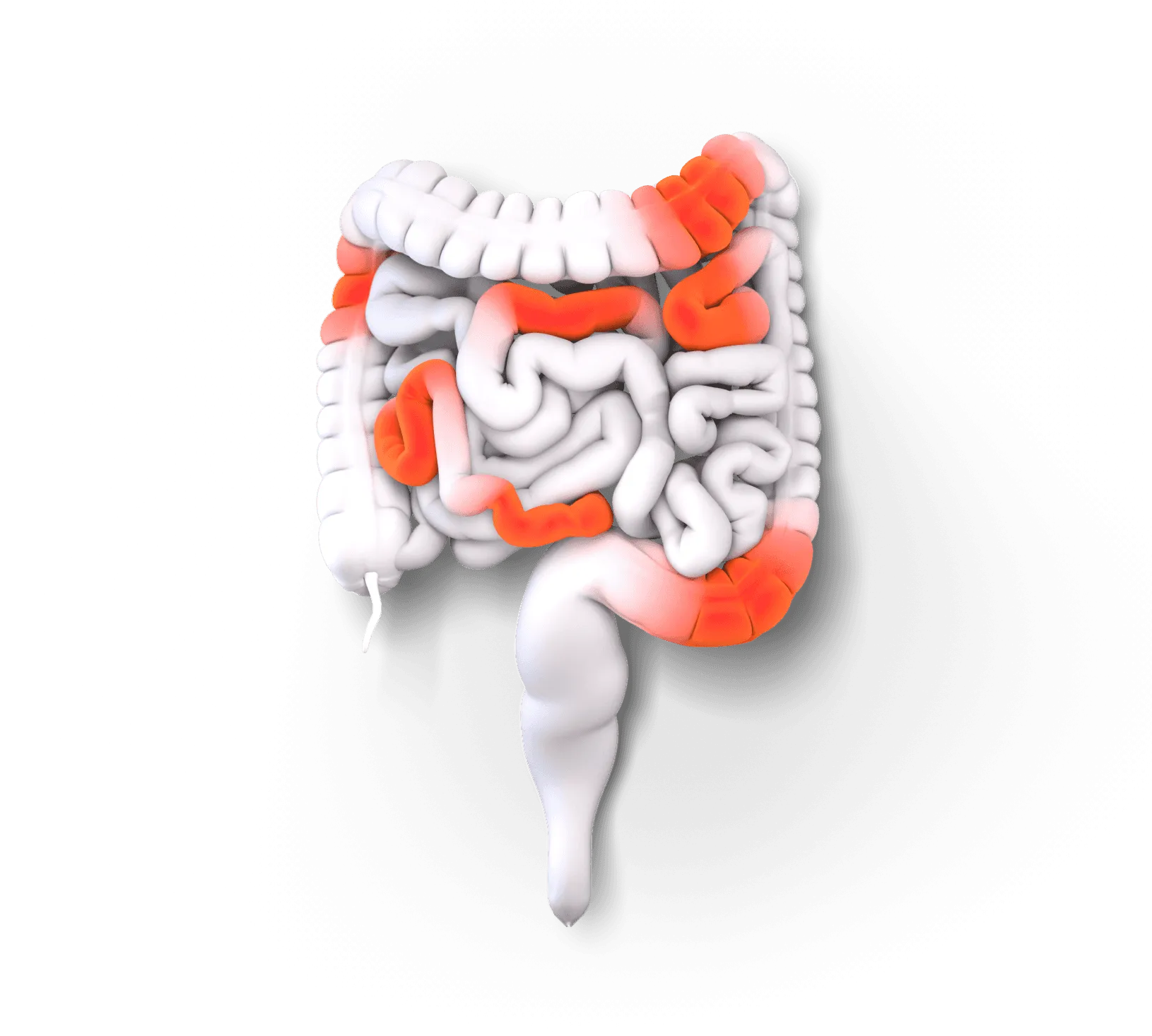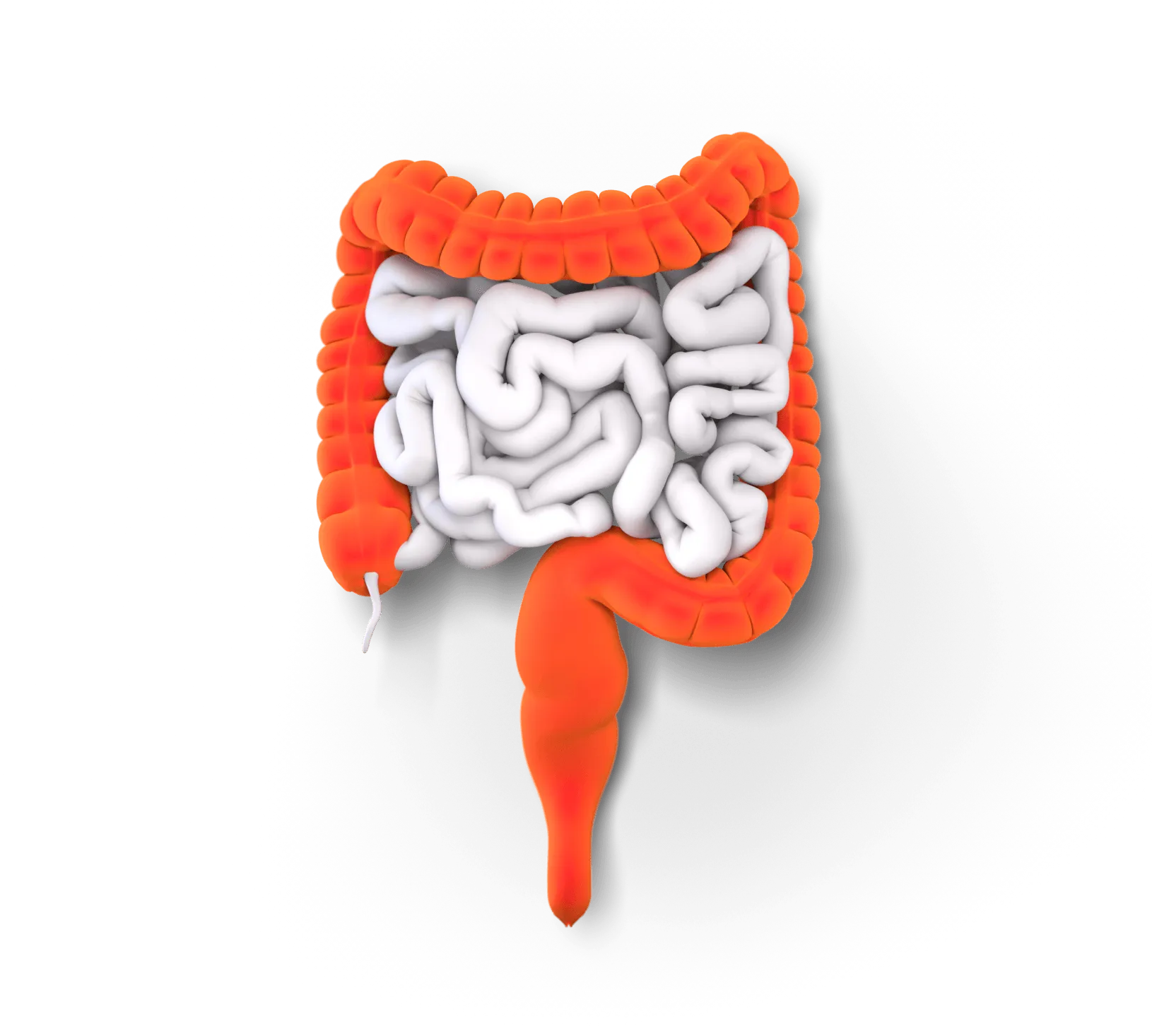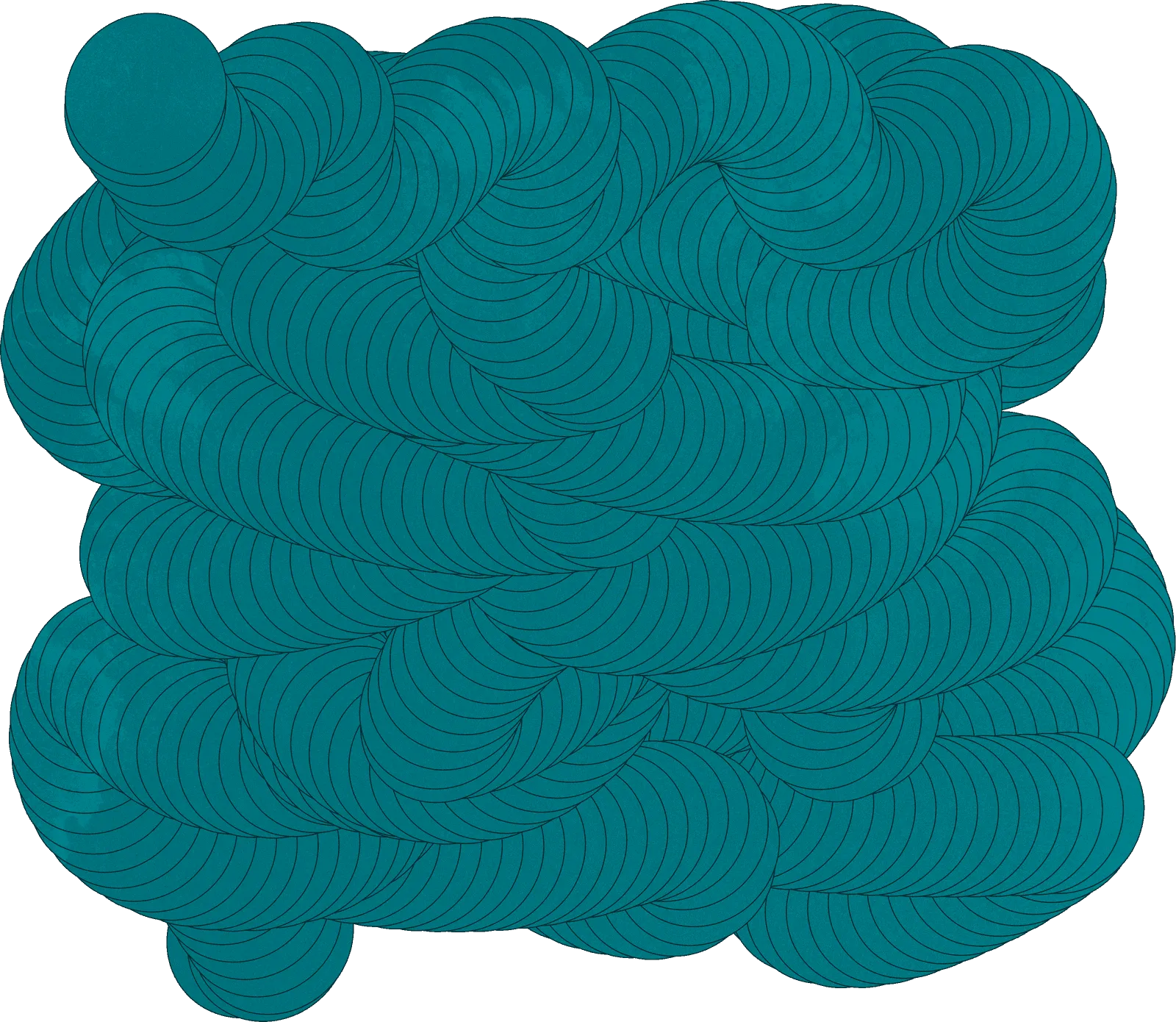The main types of IBD
Inflammatory bowel disease (IBD) is a group of diseases that cause inflammation in the digestive tract. Crohn’s disease (CD) and ulcerative colitis (UC) are the main types. They are lifelong conditions.

IBD is an autoimmune disease
IBD happens when your immune system attacks healthy cells in your gut by mistake. It’s unclear why it attacks healthy cells. Your genetics, your immune system, and environmental factors—like lifestyle and where you live—could play a role in triggering this immune response. This creates inflammation and other damage if the inflammation is not controlled over time. It’s important to note that in some people, even if they aren’t experiencing symptoms, IBD can still be doing harm. Proactive monitoring of your IBD with your care team can help prevent it from causing more damage.

Crohn’s disease
Crohn’s can impact any part of the digestive tract, from mouth to anus. It commonly impacts the end of the small intestine and beginning of the large intestine. Inflammation can affect all layers of the intestinal wall. It can skip between areas of the gut, which results in patches of healthy tissue in between diseased areas. Common symptoms of Crohn’s include diarrhea that is typically not bloody and mouth sores.
Crohn’s is usually progressive. For many people, the disease gets worse over time. That’s why ongoing monitoring is important.

Ulcerative colitis
Ulcerative colitis is the most common type of IBD. It affects the large intestine, causing continuous damage to the inner lining as it spreads. When the lining becomes inflamed, it can create ulcers and sores, which releases mucus and blood. People with UC often have blood or mucus in their stool. They may also feel an urgent need to go to the bathroom. UC may be progressive in some people, which means it can get worse over time.
What are the differences between Crohn’s disease and ulcerative colitis?
Crohn’s disease
Can affect any part of the digestive tract, from the mouth to the anus
Is usually a progressive disease, and many patients will experience worsening disease over time
May appear in patches, affecting some areas of the GI tract but not others
Inflammation may involve the entire thickness of the intestinal wall
Ulcerative colitis
Only found in the large intestine (colon and rectum)
May be progressive, some patients will experience their disease worsening over time
Inflammation typically starts in the rectum, but may spread continuously to involve the entire colon
Inflammation only occurs in the innermost lining of the large intestine


Ana Living with Crohn’s
My symptoms came and went. There were times when I felt I could manage it and there were times when I prayed I would make it to a bathroom in time.See her story
Featured
resource

IBD Starter Guide
Our IBD Starter Guide is packed with useful tools and info, including an IBD Glossary, conversation starter cards, and more.
Get the latest sent straight to your inbox.
Sign up
